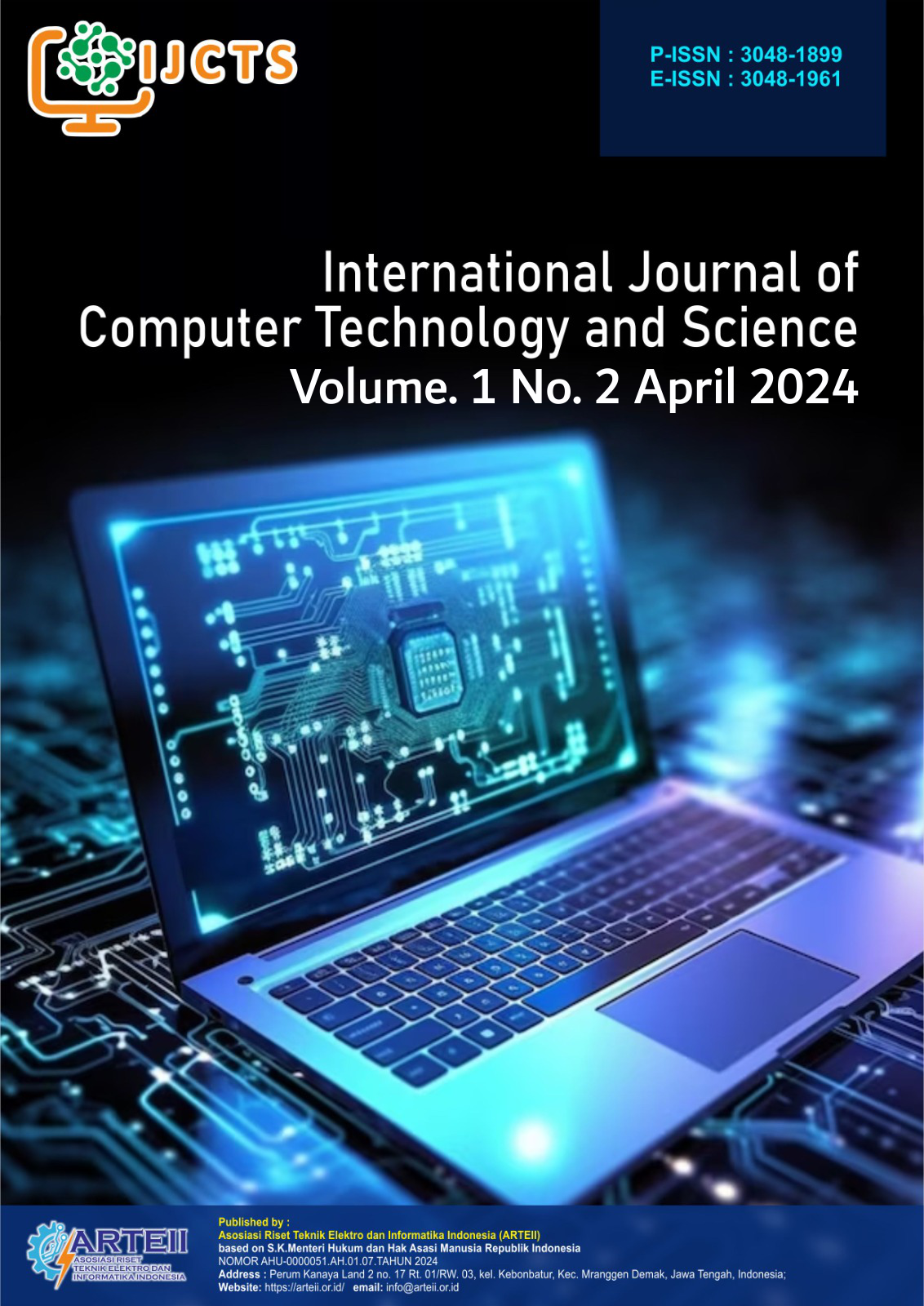Sentiment Analysis Of Social Media Data Using Deep Learning Techniques
DOI:
https://doi.org/10.62951/ijcts.v1i2.59Keywords:
Sentiment analysis, Social media, Deep learning, Convolutional neural network, Recurrent neural networkAbstract
Social media platforms contain vast amounts of data that can reveal public sentiment on various topics. This research explores the application of deep learning techniques, particularly convolutional neural networks (CNN) and recurrent neural networks (RNN), to analyze sentiment within social media text. The results indicate that these models achieve high accuracy in sentiment classification, making them valuable tools for companies seeking to understand public opinion.
References
Broniatowski, D. A., Jamison, A. M., Qi, S., & Alamo, T. (2018). Weaponized health communication: A case study of the Russian trolls on Twitter and vaccine hesitancy. Health Education & Behavior, 45(1), 1-10. https://doi.org/10.1177/1090198117718660
Caliskan, A., Bryson, J. J., & Narayanan, A. (2017). Semantics derived automatically from language corpora necessarily contain human biases. Science, 356(6334), 183-186. https://doi.org/10.1126/science.aal4230
Chen, Y., Xu, Y., & Liu, Z. (2017). A hybrid model for sentiment analysis based on CNN and LSTM. In Proceedings of the 2017 International Conference on Intelligent Transportation, Big Data & Smart City.
Davidov, D., Tsur, O., & Rappoport, A. (2010). Enhanced sentiment learning using Twitter. In Proceedings of the 23rd International Conference on Computational Linguistics.
Devlin, J., Chang, M. W., Lee, K., & Toutanova, K. (2018). BERT: Pre-training of deep bidirectional transformers for language understanding. arXiv preprint arXiv:1810.04805. https://doi.org/10.48550/arXiv.1810.04805
Gonzalez, C., & Lichtenstein, S. (2017). A case study of social media crisis management. Journal of Business Research, 78, 135-142. https://doi.org/10.1016/j.jbusres.2017.05.001
Gururangan, S., Marasović, A., Swayamdipta, S., et al. (2020). Don’t stop pretraining: Adapt language models to domains and tasks. In Proceedings of the 58th Annual Meeting of the Association for Computational Linguistics.
Hochreiter, S., & Schmidhuber, J. (1997). Long short-term memory. Neural Computation, 9(8), 1735-1780. https://doi.org/10.1162/neco.1997.9.8.1735
Kim, Y. (2014). Convolutional neural networks for sentence classification. In Proceedings of the 2014 Conference on Empirical Methods in Natural Language Processing.
Maas, A. L., Daly, R. E., Pham, P. T., et al. (2011). Learning word vectors for sentiment analysis. In Proceedings of the 49th Annual Meeting of the Association for Computational Linguistics: Human Language Technologies.
O'Connor, K. P., & Quigley, E. (2010). Using Twitter to analyze public sentiment on a new smartphone. In Proceedings of the 2010 Conference on Social Media and Society.
Pang, B., & Lee, L. (2008). Opinion mining and sentiment analysis. Foundations and Trends in Information Retrieval, 2(1-2), 1-135. https://doi.org/10.1561/1500000011
Ribeiro, M. T., Singh, S., & Guestrin, C. (2016). Why should I trust you? Explaining the predictions of any classifier. In Proceedings of the 22nd ACM SIGKDD International Conference on Knowledge Discovery and Data Mining.
Statista. (2023). Number of social media users worldwide from 2010 to 2023. Retrieved from https://www.statista.com/statistics/278414/number-of-worldwide-social-network-users/
Tumasjan, A., Sprenger, T. O., Sandner, P. G., & Welpe, I. M. (2010). Predicting elections with Twitter: What 140 characters reveal about political sentiment. In Proceedings of the Fourth International Conference on Weblogs and Social Media.
Zadeh, A., Chen, M., Poria, S., & Morency, L. P. (2018). Multimodal sentiment analysis using hierarchical fusion with linguistic and affective information. In Proceedings of the 2018 Conference on Empirical Methods in Natural Language Processing.
Zhang, Y., & Wallace, B. (2018). A sensitivity analysis of (and practitioner's guide to) convolutional neural networks for sentence classification. In Proceedings of the Eighth International Joint Conference on Natural Language Processing.
Downloads
Published
How to Cite
Issue
Section
License
Copyright (c) 2024 International Journal of Computer Technology and Science

This work is licensed under a Creative Commons Attribution-ShareAlike 4.0 International License.





